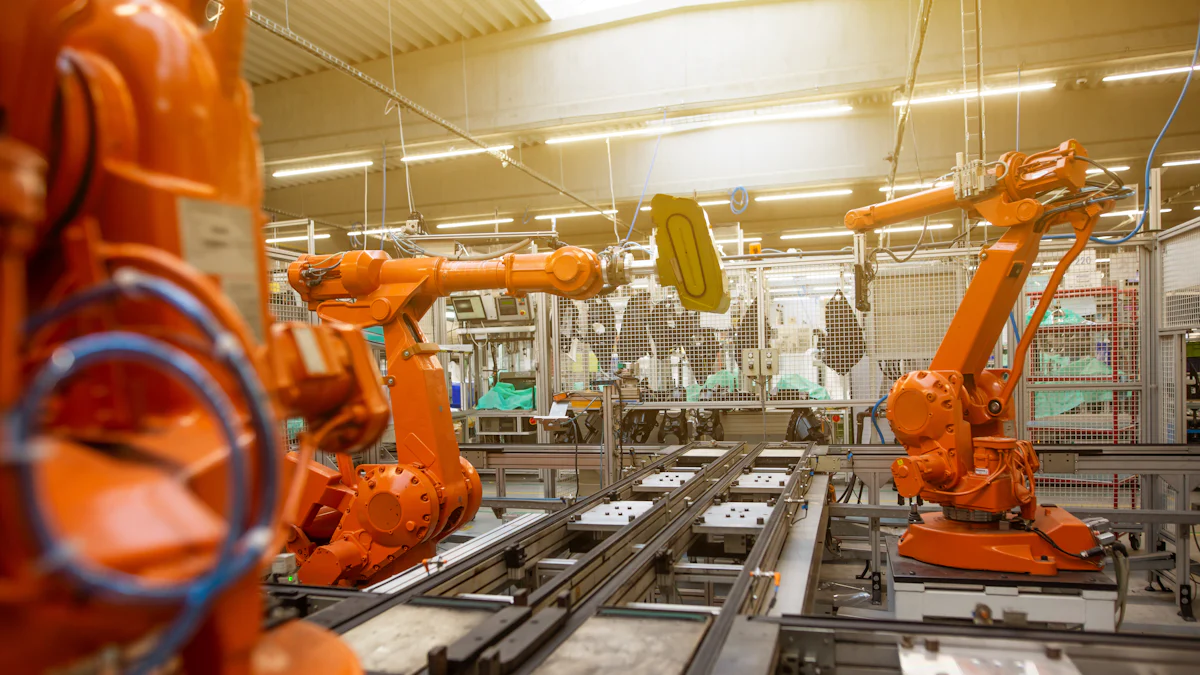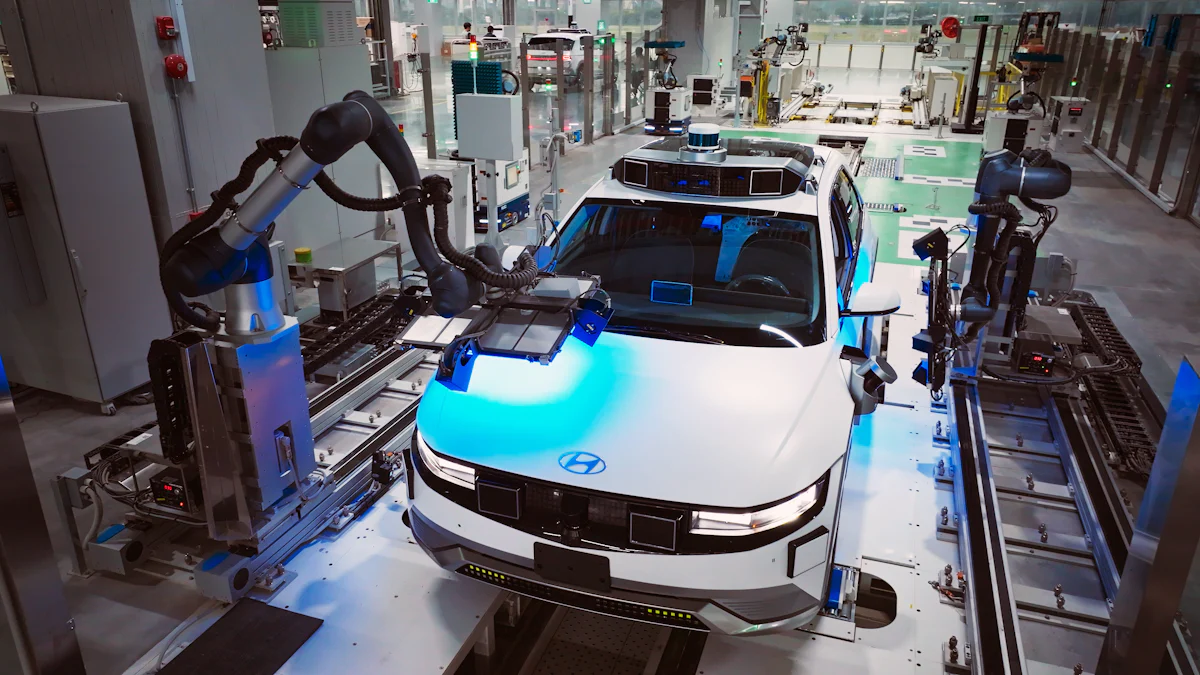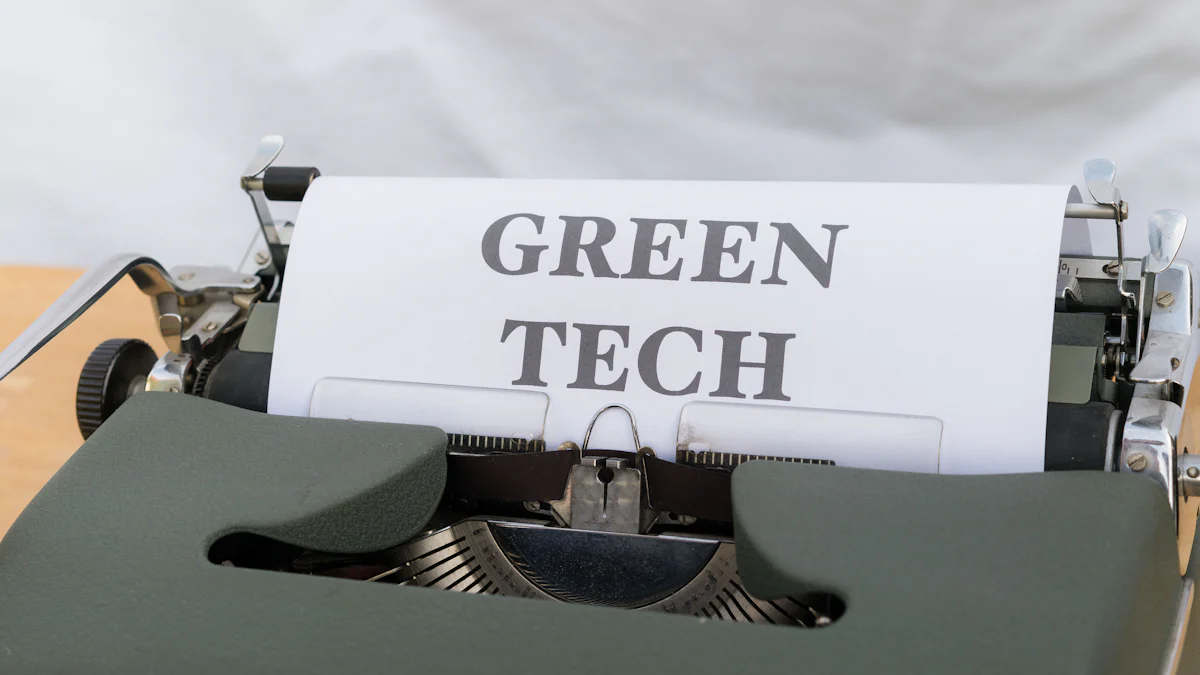Analyzing the Latest Manufacturing Progress in 2024

Manufacturing plays a crucial role in the global economy. Rapid advancements in technology have significantly impacted manufacturing processes. The focus on 2024 provides the most current insights into these changes. The manufacturing industry is projected to reach an output of €32.6tn in 2024. Key trends include the digitization of factories, transformation of supply chains, and adoption of sustainable practices. These advancements drive efficiency, resilience, and innovation in the supply chain. The commitment to efficiency and responsible practices shapes the future of manufacturing progress.
Technological Advancements in Manufacturing Progress

Automation and Robotics
Impact on Production Efficiency
Automation and robotics have revolutionized manufacturing progress. These technologies streamline production processes, leading to significant improvements in efficiency. Robots handle repetitive tasks with precision, reducing human error and increasing output. Automated systems also operate continuously, minimizing downtime and maximizing productivity. According to a study by Statista, advanced technology such as robotics can enhance overall efficiency while lowering costs.
Case Studies of Successful Implementations
Several companies have successfully implemented automation and robotics in their manufacturing processes. For instance, Foxconn Technology Group has integrated robotic systems into its assembly lines. This integration has resulted in higher production rates and improved product quality. Another example is Tesla, which uses robots extensively in its Gigafactories. These robots perform tasks ranging from welding to painting, ensuring consistent quality and faster production times.
Artificial Intelligence and Machine Learning
Predictive Maintenance
Artificial intelligence (AI) and machine learning (ML) play crucial roles in predictive maintenance. AI algorithms analyze data from sensors to predict equipment failures before they occur. This proactive approach reduces downtime and maintenance costs. A report by IoT World Magazine highlights that industrial IoT sensors with AI capabilities enable predictive maintenance, leading to improved operational efficiency.
Quality Control Enhancements
AI and ML also enhance quality control in manufacturing. Machine learning models detect defects in real-time, ensuring that only high-quality products reach the market. This technology reduces waste and increases customer satisfaction. Inspectorio's research indicates that over 80% of respondents believe AI will significantly impact supply chain efficiency and performance.
Internet of Things (IoT)
Smart Factories
The Internet of Things (IoT) transforms traditional factories into smart factories. IoT devices collect and analyze data from various sources, optimizing production processes. Smart factories use this data to make informed decisions, improving efficiency and reducing costs. Deloitte's study emphasizes that smart factory solutions drive competitiveness in the manufacturing industry.
Real-time Data Analytics
Real-time data analytics is another critical component of IoT in manufacturing. IoT sensors provide continuous data streams, allowing manufacturers to monitor operations in real-time. This capability enables quick identification and resolution of bottlenecks or inefficiencies. Faist Group's research shows that AI, machine learning, and advanced analytics transform the manufacturing sector by enabling data-driven decision-making.
Sustainable Manufacturing Practices

Green Manufacturing Technologies
Renewable Energy Integration
Manufacturing progress in 2024 emphasizes the integration of renewable energy sources. Factories now adopt solar, wind, and hydroelectric power to reduce reliance on fossil fuels. This shift not only lowers carbon emissions but also cuts operational costs. For instance, many companies have installed solar panels on factory roofs, generating clean energy on-site. The use of renewable energy aligns with global sustainability goals and enhances the green credentials of manufacturers.
Waste Reduction Techniques
Waste reduction techniques play a pivotal role in sustainable manufacturing. Companies implement strategies to minimize waste at every production stage. Techniques include lean manufacturing principles, which streamline processes to eliminate unnecessary steps. Additionally, advanced recycling systems convert waste materials into reusable resources. Adidas, for example, incorporates recycled polyester into its products, diminishing ecological impact and setting a model for the industry. Such practices not only conserve resources but also reduce disposal costs.
Circular Economy Models
Recycling and Reuse Strategies
Recycling and reuse strategies form the backbone of circular economy models. Manufacturers design products with end-of-life recycling in mind. This approach ensures that materials can be easily disassembled and repurposed. Companies also establish take-back programs, encouraging consumers to return used products for recycling. JUSDA's commitment to sustainability in logistics includes enhancing eco-friendly practices and implementing green technologies. These initiatives reduce carbon emissions and enhance resource efficiency.
Product Lifecycle Management
Product lifecycle management (PLM) optimizes the entire lifespan of a product. PLM involves designing, manufacturing, using, and disposing of products in an environmentally responsible manner. Manufacturers use digital tools to track and manage each phase of the product lifecycle. This comprehensive approach ensures that products meet sustainability standards from inception to disposal. Effective PLM reduces waste, conserves resources, and supports long-term sustainability goals.
Workforce Transformation in Manufacturing Progress
Skills and Training
Upskilling and Reskilling Programs
Manufacturing progress in 2024 demands a highly skilled workforce. Upskilling and reskilling programs address this need by equipping workers with the latest skills. According to a survey by PwC, 79% of CEOs in the manufacturing sector express concern about the availability of key skills. Companies invest in training programs to bridge this skills gap. These programs focus on advanced technologies such as automation, robotics, and artificial intelligence. Manufacturers understand that a well-trained workforce enhances productivity and drives innovation.
Collaboration with Educational Institutions
Collaboration with educational institutions plays a crucial role in workforce transformation. Manufacturers partner with universities and technical schools to develop specialized training programs. These partnerships ensure that the curriculum aligns with industry needs. Educational institutions provide hands-on training and real-world experience. This collaboration creates a pipeline of skilled workers ready to contribute to manufacturing progress. A recent survey conducted by NAM reveals that nearly half of manufacturing executives offer flexible scheduling to accommodate training needs.
Workforce Diversity and Inclusion
Gender and Ethnic Diversity Initiatives
Diversity and inclusion initiatives are essential for modern manufacturing progress. Companies implement programs to promote gender and ethnic diversity within their workforce. These initiatives create a more inclusive work environment. Diverse teams bring different perspectives and ideas, fostering innovation. Gender and ethnic diversity also enhance problem-solving capabilities. Many manufacturers have set targets to increase the representation of women and minorities in their workforce. These efforts reflect a commitment to equality and social responsibility.
Benefits of a Diverse Workforce
A diverse workforce offers numerous benefits to manufacturing progress. Diversity drives creativity and innovation. Teams with varied backgrounds approach problems from different angles, leading to unique solutions. A diverse workforce also improves decision-making processes. Studies show that companies with diverse teams perform better financially. Additionally, diversity enhances employee satisfaction and retention. Workers feel valued and respected in an inclusive environment. Manufacturers recognize that diversity is not only a moral imperative but also a business advantage.
Global Supply Chain Dynamics
Resilience and Risk Management
Strategies for Mitigating Disruptions
Manufacturers must adopt robust strategies to mitigate supply chain disruptions. Diversifying the supplier base stands out as a critical approach. Companies source materials from multiple suppliers to reduce dependency on a single source. This strategy ensures continuity in case of disruptions. Investing in technology also enhances supply chain resilience. Real-time data analytics provide insights into potential risks, allowing proactive measures. Additionally, manufacturers establish buffer stocks to cushion against unforeseen disruptions. These strategies collectively strengthen supply chain resilience.
Case Studies of Resilient Supply Chains
Several companies exemplify resilient supply chains. Toyota's just-in-time inventory system minimizes waste and maximizes efficiency. However, Toyota also maintains a network of backup suppliers to ensure continuity. Procter & Gamble (P&G) employs advanced analytics to forecast demand accurately. P&G's approach reduces stockouts and overproduction. Another example is Cisco, which uses a risk management framework to identify and address vulnerabilities. Cisco's framework includes regular audits and contingency planning. These case studies highlight effective practices for building resilient supply chains.
Regional Manufacturing Hubs
Emerging Markets
Emerging markets play a pivotal role in global manufacturing dynamics. Countries like Vietnam and India attract significant investments due to lower labor costs. These markets offer a competitive edge with favorable trade policies. Manufacturers benefit from reduced production costs and access to new consumer bases. Additionally, emerging markets invest in infrastructure to support manufacturing activities. Improved transportation networks and logistics facilities enhance operational efficiency. The rise of these markets reshapes the global manufacturing landscape.
Impact of Trade Policies
Trade policies significantly impact regional manufacturing hubs. Tariffs and trade agreements influence production decisions. For instance, the US-China trade tensions prompted companies to relocate production to other regions. Manufacturers seek stable environments with favorable trade terms. Free trade agreements (FTAs) facilitate smoother cross-border transactions. FTAs eliminate tariffs and reduce regulatory barriers. This environment encourages investment in regional manufacturing hubs. Consequently, trade policies shape the strategic decisions of manufacturers.
JUSDA's Role in Manufacturing Progress
Innovative Supply Chain Solutions
JusLink Platform
JUSDA leverages the JusLink Platform to revolutionize supply chain management. This platform integrates suppliers, manufacturers, and customers, ensuring seamless operations. The JusLink Platform provides real-time visibility into the supply chain, enhancing decision-making processes. By utilizing advanced technologies like big data and IoT, JUSDA optimizes resource utilization. This platform reduces lead times and improves overall efficiency, driving significant manufacturing progress.
Real-time Collaborative Platforms
JUSDA offers real-time collaborative platforms that connect all stakeholders in the supply chain. These platforms facilitate instant communication and data sharing among partners. Manufacturers benefit from enhanced coordination and quicker response times. Real-time collaboration minimizes disruptions and ensures smooth operations. JUSDA's innovative approach fosters a more resilient and agile supply chain, contributing to continuous manufacturing progress.
Global Presence and Capabilities
Service Points and Warehousing
JUSDA boasts a robust global presence with 155 service points worldwide. These service points ensure timely delivery and efficient logistics management. JUSDA operates over 2.5 million square meters of warehousing space. This extensive warehousing capacity supports large-scale manufacturing operations. Manufacturers gain access to strategically located facilities, reducing transportation costs and improving supply chain efficiency. JUSDA's global reach enhances its ability to support manufacturing progress on a global scale.
International Service Routes
JUSDA manages more than 2,000 international service routes, ensuring reliable and efficient transportation. These routes connect major manufacturing hubs across the globe. Manufacturers benefit from reduced transit times and lower shipping costs. JUSDA's expertise in international logistics ensures compliance with regulatory requirements. This capability streamlines cross-border transactions and enhances global supply chain operations. JUSDA's extensive network of service routes plays a crucial role in facilitating manufacturing progress.
Manufacturing in 2024 showcases remarkable advancements and trends. Key technologies like AI, machine learning, and IoT drive efficiency and innovation. Sustainable practices such as renewable energy integration and waste reduction gain prominence. Staying updated with these trends ensures competitive advantage and operational excellence.
Adopting technological and sustainable practices remains crucial. Companies must invest in AI tools and green technologies to enhance decision-making and sustainability. The future of manufacturing promises continued progress and transformation.
Manufacturers should embrace these changes to thrive in the evolving industry landscape.
See Also
Mastering Manufacturing Success: Essential Supply Chain Strategies for 2024
The Pathway to Manufacturing Excellence: Essential Strategies
Exploring Lean Logistics for Success in High-Tech Manufacturing
Efficient Solutions for Supply Chain Challenges in High-Tech Manufacturing
Unlocking Success: Demystifying High-Tech Manufacturing Consulting
